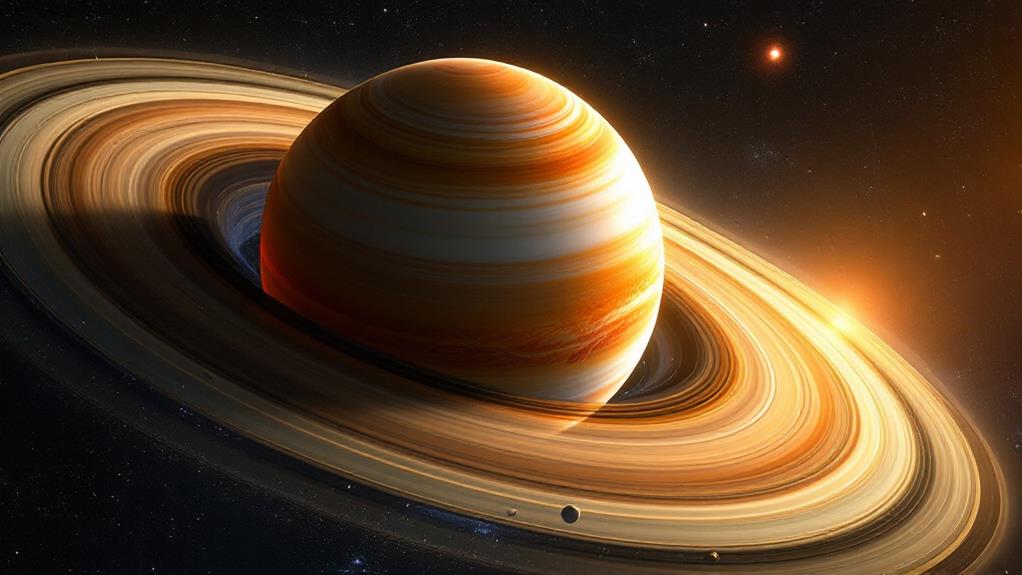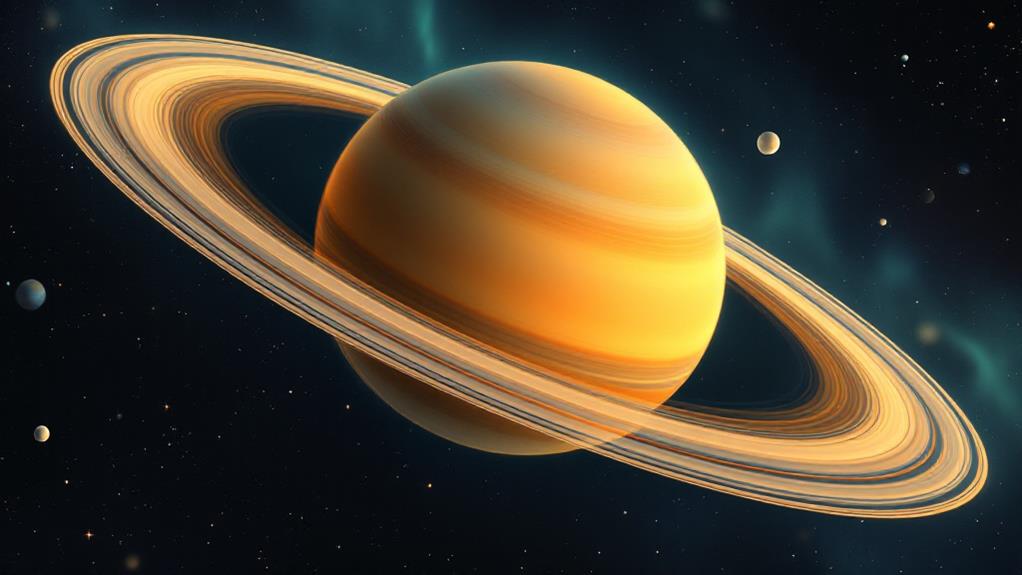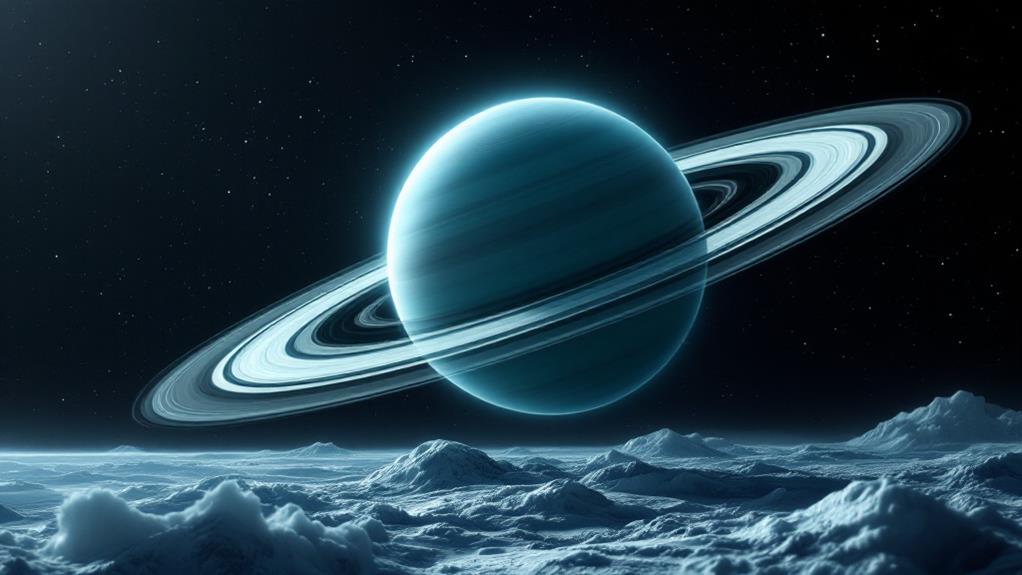Fascinating Facts About Mercury: The Closest Planet to the Sun
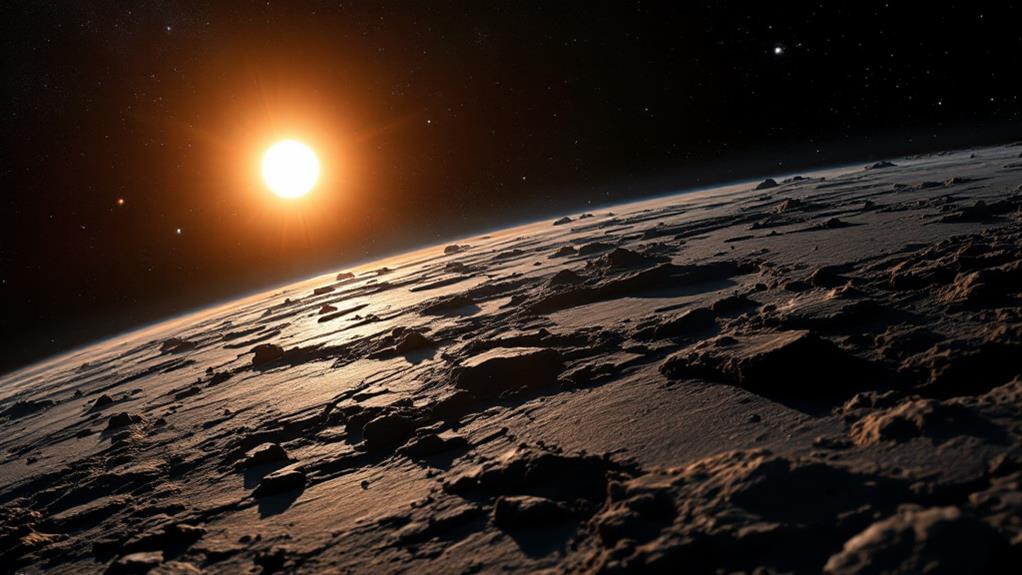
Mercury, the closest planet to the Sun, is full of surprises. You'll find extreme temperature swings, with daytime highs reaching 800°F and nighttime lows plummeting to -290°F. Its unique orbit completes in just 88 Earth days, making it the fastest-orbiting planet. Despite its small size, Mercury boasts a mysterious magnetic field and unexpectedly harbors ice at its poles. The planet's composition is peculiar, with an exceptionally dense core making up 55% of its volume. These intriguing features make Mercury a fascinating subject for planetary scientists and space enthusiasts alike. Uncover more mind-bending facts about this enigmatic world as you delve deeper.
Mercury's Extreme Temperature Swings
Mercury's temperature extremes are truly mind-boggling. As the closest planet to the Sun, you'd expect it to be consistently hot, but that's not the case. The planet's lack of a substantial atmosphere and its slow rotation create dramatic temperature swings between day and night.
During the day, Mercury experiences intense daytime temperatures that can soar up to 800°F (427°C) at the equator. That's hot enough to melt lead! However, as soon as the Sun sets, the planet quickly loses its heat to space. The frigid nighttime conditions can plummet to a bone-chilling -290°F (-179°C). This temperature range of over 1,000°F (560°C) is the most extreme in our solar system.
Interestingly, Mercury's poles maintain consistently cold temperatures, never rising above -136°F (-93°C). This is because they're permanently shadowed from the Sun's intense rays. These extreme temperature variations pose significant challenges for potential exploration missions, as any equipment or spacecraft would need to withstand both scorching heat and freezing cold. Despite these harsh conditions, Mercury continues to fascinate scientists and space enthusiasts alike.
The Planet's Unique Orbit
While most planets in our solar system follow nearly circular orbits, Mercury's path around the Sun is distinctly eccentric. Its elliptical orbit brings it as close as 29 million miles to the Sun at perihelion and as far as 43 million miles at aphelion. This unique trajectory affects Mercury's speed as it travels around the Sun, causing it to move faster when closer and slower when farther away.
Mercury's orbit is also tilted by about 7 degrees compared to Earth's orbital plane, which contributes to its unusual behavior. The planet completes one revolution around the Sun in just 88 Earth days, making it the fastest-orbiting planet in our solar system. Despite its rapid rotation, Mercury's orbital resonance means it rotates on its axis three times for every two orbits around the Sun.
This peculiar orbital dance has significant consequences for Mercury's surface conditions and appearance from Earth. The planet's eccentric orbit, combined with its slow rotation, creates extreme temperature variations and contributes to its distinctive cratered landscape. Understanding Mercury's unique orbit helps scientists explore the mysteries of our solar system's formation and evolution.
Mysterious Magnetic Field

Scientists were taken aback when they uncovered Mercury's magnetic field in 1974. While it's only about 1% as strong as Earth's, its presence has puzzled researchers ever since. You might wonder why this tiny planet has a magnetic field at all, given its slow rotation and small size.
The answer lies in Mercury's large, partially molten iron core. This core, which makes up about 85% of the planet's radius, generates the magnetic field through a dynamo effect. However, it's not a constant force. Mercury's magnetic field exhibits variability, changing in strength and direction over time.
One of the most intriguing aspects of Mercury's magnetic field is its interactions with the solar wind. As the closest planet to the Sun, Mercury faces intense solar radiation. The magnetic field acts as a shield, deflecting some of these particles. But it's not entirely effective – the solar wind can still penetrate the field, creating unique phenomena like magnetospheric substorms and auroras on the planet's surface.
Studying Mercury's magnetic field helps scientists better understand planetary formation and evolution, making it a pivotal area of ongoing research.
Unexpected Ice at the Poles
Ice worlds typically conjure images of distant, frigid planets, yet Mercury harbors its own icy secrets. You might be surprised to learn that despite its proximity to the Sun, Mercury's poles contain significant deposits of water ice. These polar ice features exist due to the planet's unique characteristics and thermal regulation mechanisms.
Mercury's axis has a tilt of almost zero degrees, meaning some deep craters at the poles never receive direct sunlight. These permanently shadowed regions can reach temperatures as low as -280°F (-173°C), cold enough to preserve water ice for billions of years. Scientists estimate that Mercury's poles could contain up to 100 billion to 1 trillion tons of water ice.
The identification of ice on Mercury has important implications for our understanding of the planet's formation and evolution. It suggests that water-rich comets or asteroids may have impacted Mercury in the past, depositing the ice we observe today. This finding also raises intriguing questions about the potential for subsurface liquid water and the possibility of organic compounds existing on the planet closest to our Sun.
Mercury's Peculiar Composition
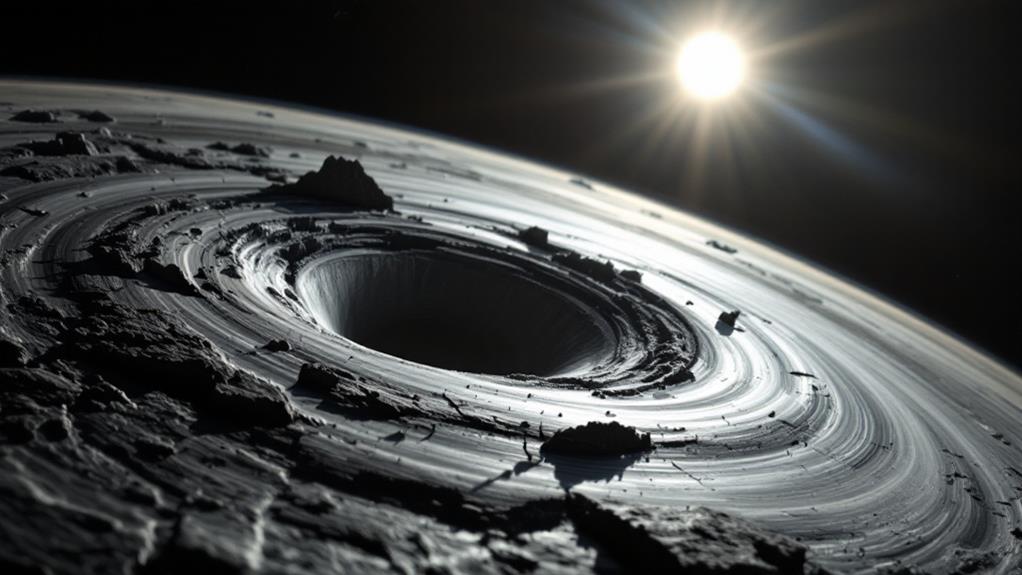
Mercury's makeup defies expectations for a planet so close to the Sun. You might think its proximity would result in a completely molten world, but that's far from the truth. Mercury's composition is surprisingly complex and unique among the planets in our solar system.
At its heart, Mercury boasts an exceptionally dense core composition. This core makes up about 55% of the planet's volume, a far larger proportion than any other terrestrial planet. It's primarily composed of iron, which explains Mercury's surprisingly strong magnetic field. The planet's outer layers consist of a thin mantle and crust, mostly made up of silicate rocks.
Mercury's reflective surface properties are also intriguing. Despite its closeness to the Sun, the planet isn't uniformly scorching. Its surface is a patchwork of bright and dark areas, with the brighter regions composed of relatively young impact craters. These craters expose fresh, reflective material from beneath the surface, while the darker areas are older, more weathered terrain. This varied surface composition contributes to Mercury's unique thermal properties, allowing for extreme temperature fluctuations between its day and night sides.
